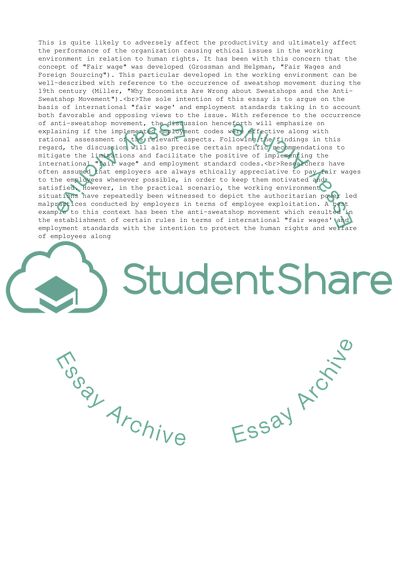Cite this document
(Discuss the arguments for and against international fair wage and Essay - 1, n.d.)
Discuss the arguments for and against international fair wage and Essay - 1. https://studentshare.org/business/1796888-discuss-the-arguments-for-and-against-international-fair-wage-and-employment-standards-codes-ie-anti-sweatshop-rules
Discuss the arguments for and against international fair wage and Essay - 1. https://studentshare.org/business/1796888-discuss-the-arguments-for-and-against-international-fair-wage-and-employment-standards-codes-ie-anti-sweatshop-rules
(Discuss the Arguments for and Against International Fair Wage and Essay - 1)
Discuss the Arguments for and Against International Fair Wage and Essay - 1. https://studentshare.org/business/1796888-discuss-the-arguments-for-and-against-international-fair-wage-and-employment-standards-codes-ie-anti-sweatshop-rules.
Discuss the Arguments for and Against International Fair Wage and Essay - 1. https://studentshare.org/business/1796888-discuss-the-arguments-for-and-against-international-fair-wage-and-employment-standards-codes-ie-anti-sweatshop-rules.
“Discuss the Arguments for and Against International Fair Wage and Essay - 1”. https://studentshare.org/business/1796888-discuss-the-arguments-for-and-against-international-fair-wage-and-employment-standards-codes-ie-anti-sweatshop-rules.


